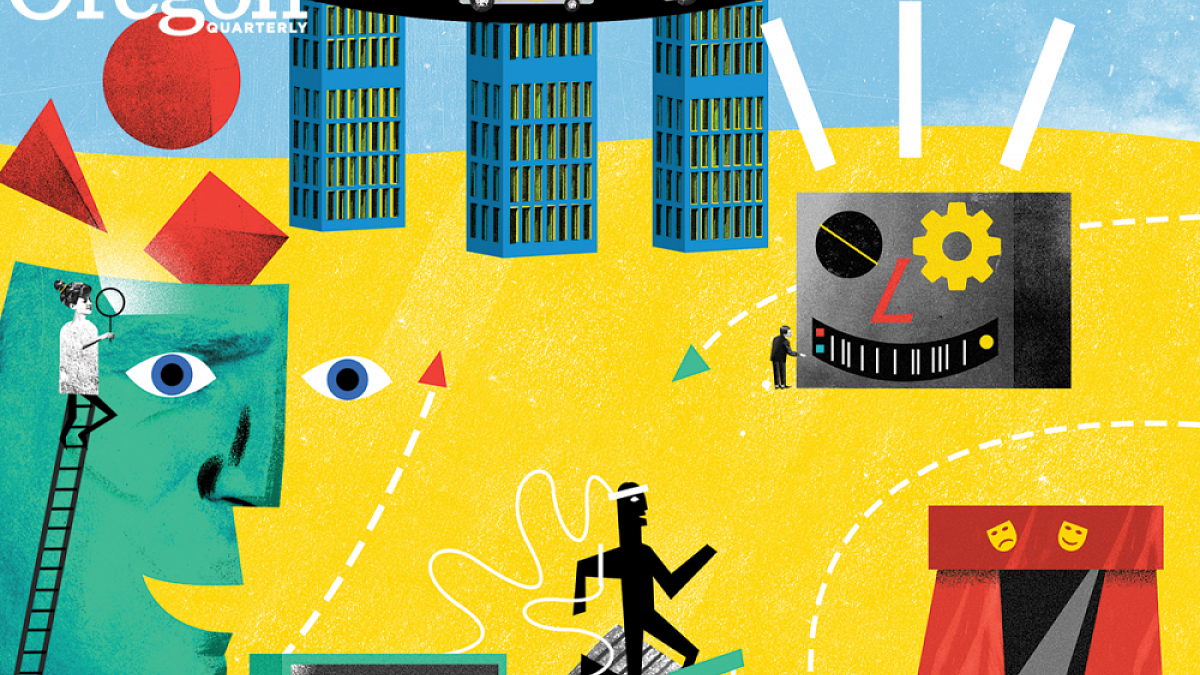Most die on the vine, but some burrow into the psyche like a grain of sand into an oyster, emerging later as something beautiful.
The UO has always been fertile ground for bold thinking, providing faculty members with the resources and inspiration they need to solve pressing problems. Like white light through a prism, these problems must often be separated into components we can understand before the solution becomes clear.
The UO is illuminated by bright thinkers. We spoke with five of them about problems and solutions in urban design, collaborative science, optimizing experiences, obesity prevention, and careers. Although their focal areas are all different, these leaders are united in their desire to use big ideas to improve lives. Let there be light.

Nico Larco
Self-driving cars could leave cities in the dust
Every generation dreams of someday. Tinkerers and futurists have always dangled these carrots in front of us, from Dick Tracy wristwatches to invisible fabric. Many have come to pass, many have not. In the 80s, a show called Knight Rider introduced to the masses the idea of a car that didn’t need a driver. At the time, it seemed ludicrous.
Yet here we are. Autonomous vehicles (AVs) are coming, and soon; rideshare company Lyft just announced that it will launch AV rides by the end of this year. But before you fantasize about sending your car out to pick up a gallon of milk, bear in mind that life as we know it will never be the same.
What keeps Nico Larco up at night is the fact that most cities aren’t remotely ready for the changes AVs will bring. Larco is a professor of architecture at the UO College of Design and codirector of the Sustainable Cities Initiative, which is examining how technology changes our cities. Dubbed “Urbanism Next,” the project focuses on the ramifications of those changes. Their August 2017 report goes into great detail about the impact of AVs on local government budgeting and finance.
“We need to understand these changes or we’ll be in serious trouble,” he says. “Cities, as we know them, could be in dire straits with fairly disruptive—and potentially debilitating and destructive—effects.”
E-commerce has already changed suburban landscapes, where vacant strip malls and empty parking lots serve as warnings to any industry formed around the need for a physical presence. Larco says the rise of the sharing economy, increased sprawl, reduced need for parking, and other factors should compel municipalities to rethink how they spend their revenue.
These rapidly shifting technologies and preferences also get him up in the morning (which makes you wonder if he’s always awake). He points out that cars are woefully inefficient machines that sit unused 95 percent of the time, so he’s encouraged that Uber and Lyft are already looking at ways to use AVs and algorithms to create hyperefficient, improvised routes for multipassenger transportation, based on who needs a ride, when, and to where.
“If you start to think of mobility as a service, then all of a sudden you can specialize the car to be whatever it is that person needs at that time,” he says.
Few of the 90,000 local governments in the US have looked at this in earnest. Larco says the ones he’s spoken to are “petrified,” which should give us pause. It’s unlikely your minivan will be taking the kids to soccer practice next year, but all the technology you need to do it is here. In fact, it’s just around the corner. And it’s trying to park.
Read more about Larco’s current research on AVs and how technology is changing cities at urbanismnext.uoregon.edu.
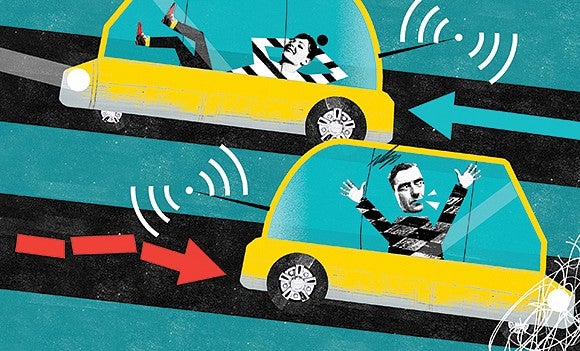
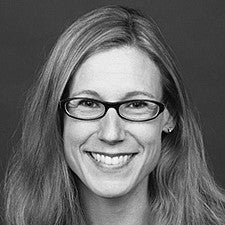
Laura Lee McIntyre
Collaborations will shape the future of autism research and treatment
Autism is typically diagnosed during early childhood. There are telltale signs, like peculiar obsessions or avoiding eye contact. Researcher Laura Lee McIntyre and her colleagues at the UO College of Education develop early-childhood evaluations that test for autism and they explore the interventions, or individual treatments and supports, that follow.
The past 20 years have seen massive strides in our understanding of autism spectrum disorder (ASD). McIntyre says we know a great deal more about the role genes play, and that we now recognize autism as a brain—not behavioral—disorder. Collectively, these advances have moved the science forward and increased public awareness.
“Our knowledge as a community has really improved because autism has become more of a household name,” McIntyre says.
But autism is lifelong, so treatments are more like adaptations. It’s not only parents who must learn how to raise a child with autism—it’s siblings, grandparents, and the entire family system across the child’s lifespan.
One of McIntyre’s projects, for example, incorporates mindfulness-based stress reduction into her work with parents, hopefully easing the anxiety of having a child with challenging behaviors. Her formidable research portfolio extends well beyond autism, including study of all manner of childhood disorders and disabilities and how they affect families, communities, schools, and society.

Although better interventions are one goal, McIntyre is equally invested in earlier detection. Diagnostic tools such as the MRI at the UO’s Lewis Center for Neuroimaging (LCNI) are revealing critical information about the brain mechanisms behind ASD. McIntyre works with LCNI director Fred Sabb and his team to understand whether autism can be identified sooner than is currently possible through simply observing behavior.
“It’s the opportunity to work with colleagues who bring something complementary,” she says. “Gone are the days where I do all the work myself. I partner with other colleagues who bring different areas of expertise, and that makes it fun.”
The UO’s $1 billion Phil and Penny Knight Campus for Accelerating Scientific Impact is dedicated to the very cross-disciplinary collaboration McIntyre relishes. If that helps bring new intervention or prevention models forward more quickly, so much the better; she says it takes an average of 17 years to develop one, test it, and bring it to scale.
In other words, today’s models aren’t based on our current understanding. They’ve improved outcomes, though it’s hard to say how much, and they weren’t a product of these deep collaborations. Psychologists, neuroscientists, toxicologists, and geneticists are now working together to help unravel the mysteries of ASD, and for families coping with a diagnosis, that help can’t come quickly enough.
McIntyre will give a free lecture titled “A Spectrum of Promise: A Multidisciplinary Approach to Autism and Other Neurodevelopmental Disorders” on Tuesday, November 14, at 7:00 p.m. in the Shedd Auditorium in Eugene as part of the Science Knight Out series, hosted by the Knight Campus. For more information, visit
uoregon.edu/scienceknight.

Troy Campbell
Happiness is a product of awesome experiences
Troy Campbell wants us to be happy. More to the point, he wants us to understand what will make us happy, and to use that knowledge to optimize experiences for ourselves and others.
Although his background is in psychology, Campbell is an assistant professor of marketing at the UO’s Charles H. Lundquist College of Business. Because businesses are largely about “designing” experiences, it makes sense that Campbell explores the intersection of these disciplines.
We already know some of the secrets to happiness—a mix of excitement and comfort, friends and family, and the feeling that we are pursuing our passions, for example. What we don’t understand are the details necessary to create those positive experiences. Campbell is driven to learn those details.
“So much of business is just making people’s lives better and easier and more fun. Right? That’s a beautiful, wonderful place to work in,” he says.
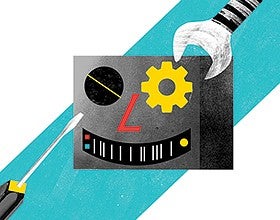
There are two sides to any experience—the creator and the consumer. The creator is usually a business that designs an experience to attract consumers, who pay for what bestselling authors Chip and Dan Heath call “defining moments.” Campbell helps people on each side of the equation make it as awesome as possible—a “portal of magic,” as he puts it.
In a recent study, he examined restaurants, which generally encourage full commitment to healthy entrees or unhealthy ones. So we either order a salad or a plate of fries, not feeling happy about either because what we really wanted was both. Or what if we eat at, say, the Cheesecake Factory but deny ourselves their famous cheesecake because the only option is to order a monstrous, 1,000-calorie slice? These scenarios frustrate Campbell because they ignore psychology.
“Many people can be happy or relatively happy by having mostly virtues,” Campbell says. “So, 80 percent salad and 20 percent French fries and they can be very happy. It allows them to meet both of their goals. In fact, they might be more interested in going to a restaurant that offers them this ability to engage in what is called ‘multiple goal pursuit’ and they can leave happier and healthier.”
Campbell wants us to know that, as the patrons in this scenario, we have a lot of agency over choices and experiences. Unfortunately, we often aren’t attuned to what will make us the happiest and therefore can’t articulate it, so we cede that agency to others. He’d love to change that.
“Our everyday would be better if we understood ourselves better,” he says. “We put too much emphasis on expecting others to understand us rather than helping them to understand us.”
Dig deeper into Campbell’s work at troyhcampbell.weebly.com, or follow @troyhcampbell on Twitter.
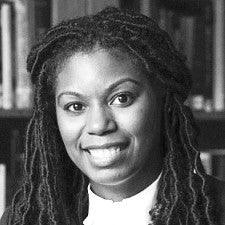
Tasia Smith
In the fight against childhood obesity, one size does not fit all
Childhood obesity is frequently called an epidemic. One in three kids is overweight or obese; one-third of the entire US population is in the same boat. And the numbers are going the wrong way.
There’s a lot to understand here. Asking why kids are overweight is like asking why we have poverty or inequality. It’s complicated. It’s not just about nutrition—it’s about making healthier choices, like regular trips to the doctor and getting enough exercise. Kids seldom make these choices themselves.
Tasia Smith works in the UO’s Health Promotion and Obesity Prevention (HPOP) cluster, a multidisciplinary research team made possible by a $25 million gift from Connie, BS ’84, and Steve Ballmer. The cluster studies the causes that contribute to obesity, with an eye toward prevention. Smith’s piece of the puzzle concerns the cultural and community context behind individual choice within high-risk groups, particularly ethnic minorities and low-income communities.
Rural communities are a particular focus of Smith’s, where 23.5 million Americans face artificially high prices and limited access to healthy food. Families trying to stretch a dollar often have few choices in these “food deserts,” but by examining communities like Oakridge, 60 miles southeast of Eugene, researchers are finding solutions. A community buying group there has partnered with grocer Whole Foods Market to buy food at near-wholesale rates, passing the savings on to participating families.

“We want to know whether this program is really working and what we can do to improve it, so we can focus on implementing something similar in other rural communities in Oregon,” Smith says.
The HPOP cluster focuses on improving the interventions and outreach programs that aren’t working for those at-risk groups. In the Oakridge example, a choice between a week’s worth of sloppy joes and tater tots or one meal of salmon, broccoli, and wild rice isn’t much of a choice at all. Low-income areas in cities face similar challenges. In the face of these seemingly intractable problems, small steps such as choosing cheaper frozen vegetables over more expensive fresh produce are important ones.
But prevention is a better weapon than intervention in this fight. Broad-based campaigns can increase general awareness, but a truly effective approach to curbing childhood obesity must have good science behind it and be highly targeted.
Smith has learned that getting out and talking to people makes them far more receptive to change than simply telling them what they should and shouldn’t eat. If we can treat people as individuals and communicate in a way that respects their circumstances, we stand a good chance of tipping the scales. Anything less is a recipe for failure.
To watch an interview in which Smith talks about her work within the Health Promotion and Obesity Prevention cluster, visit youtu.be/LET83G8-sLQ.

W. Andrew Marcus
Integrating academic and career advising under one roof
This is not your parents’ job market. Jobs such as “user-experience designer” or “chief listening officer” didn’t exist 10 years ago. As young entrepreneurs identify niche opportunities, jobs will evolve to suit the moment. In a 2013 New York Times article, Thomas Friedman said, “My generation had it easy. We got to ‘find’ a job. But, more than ever, our kids will have to ‘invent’ a job.”
W. Andrew Marcus, Tykeson Dean of Arts and Sciences, says that UO graduates emerge with the critical reasoning and complex problem-solving skills that the vast majority of employers (93 percent) agree is more important than an undergraduate major. But that’s only half the equation.
“What we want to provide for those students is the ability to articulate the specific skills they’ve acquired,” Marcus says. “We need to give them the vocabulary, facts, and concrete evidence of their own performance that will help build their portfolios and make a good case to employers.”

To that end, Marcus is presiding over the construction of Tykeson Hall, which will combine a headquarters for the College of Arts and Sciences—and its academic advisors—with the Career Center advisors. A physical and functional connection between the two areas is a pretty novel idea, but they will be tightly integrated and highly visible, with a central advising hub on the ground floor and focused, “themed” advising teams on the second floor. Students will take many of their general-education courses in Tykeson, constantly coming into contact with advisors who reinforce the connection between the liberal arts and gainful employment.
Institutions will be challenged to keep pace with the job market, whereas people can constantly adapt and reinvent themselves—as long as they know how. As Harvard education expert Tony Wagner says, “What you know matters far less than what you can do with what you know.”
Broadening the UO’s approach to advising is central to Marcus’ vision for Tykeson Hall, which opens in 2019. Advisors are traditionally specific to a major or department, contributing over time to a narrow perspective.
“We need to have advisors who can open the eyes of our students to all the possibilities that are out there to address their interests,” he says.
Rather than choosing a major based solely on its perceived career prospects, Marcus believes that students should follow their passion. That’s what keeps them engaged, open-minded, and inspired to build that all-important portfolio, he says—all of which will serve them in the years to come.
“Success is really tied to educating our students that they can, in fact, do what they want to do—not what they think they ought to do in order to have a successful life,” he says.
The official groundbreaking for Tykeson Hall, just west of Johnson Hall, took place October 6. For more information about Tykeson Hall, visit tykeson.uoregon.edu.
—By Cody Pinkston
Cody Pinkston is a writer and videographer who lives in sunny Bend, OR, with his wife, Amy. His website is www.realcodyjames.com.


